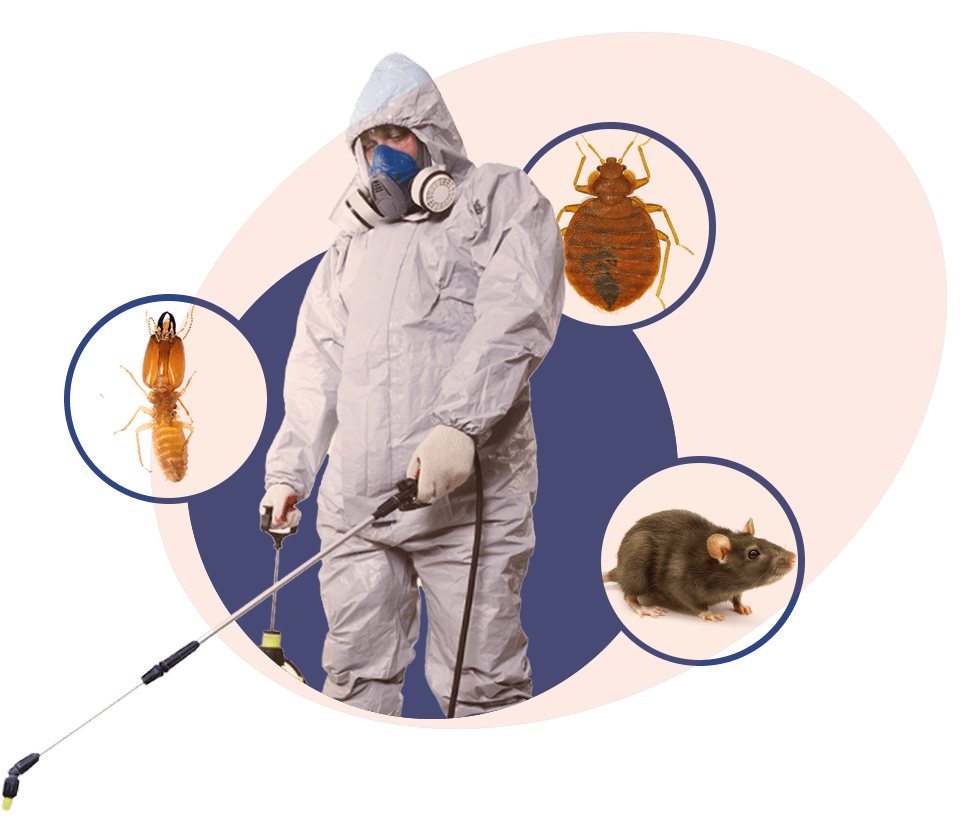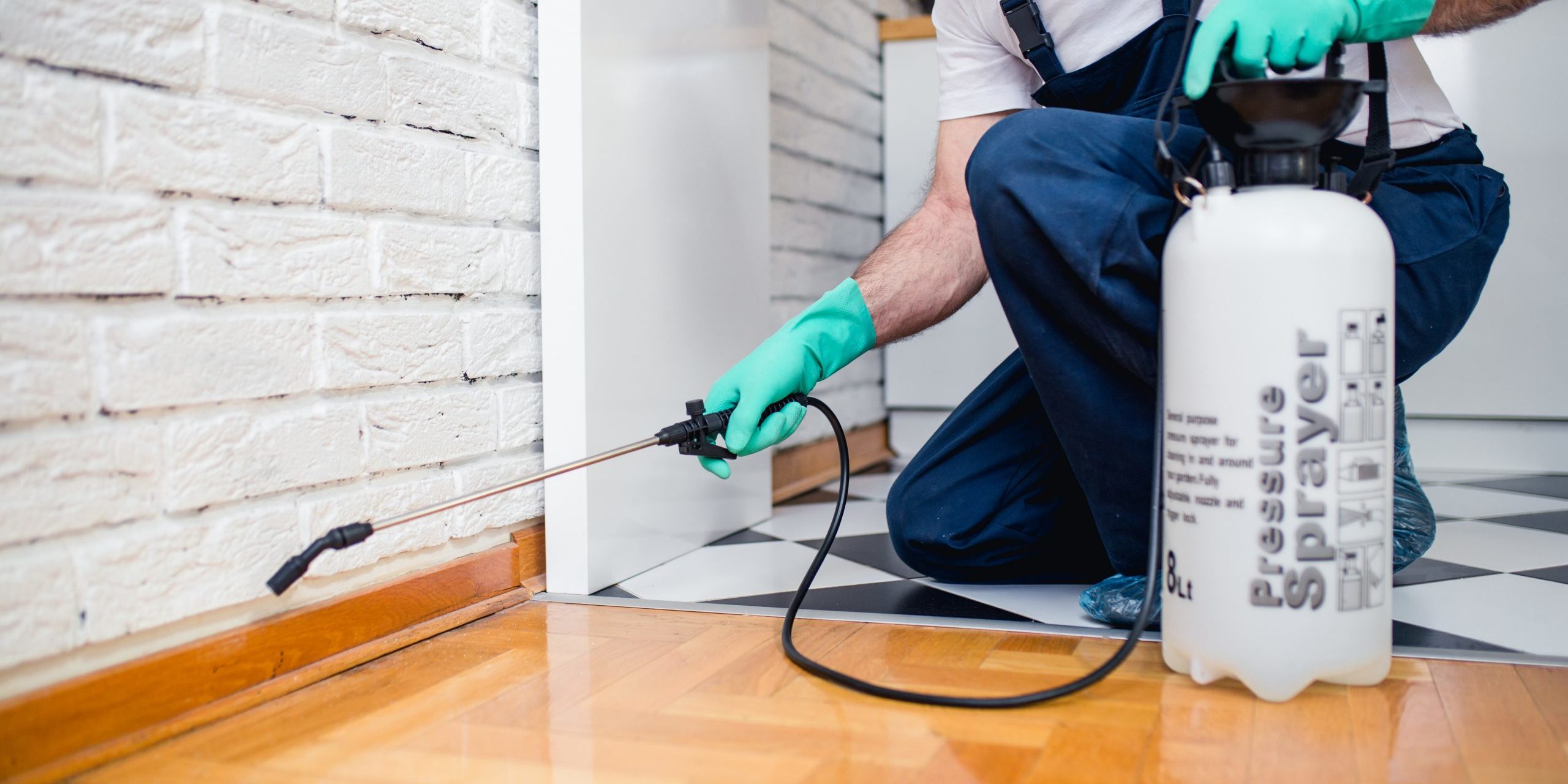Pest Control offering natural and non-toxic treatment options.
Pest Control offering natural and non-toxic treatment options.
Blog Article
Innovative Pest Control Techniques for Guarding Your Residential Property From Wildlife
As city areas expand, the communication between human environments and wild animals becomes increasingly intricate, requiring ingenious bug control techniques to effectively safeguard property. The efficiency of these approaches is often contingent on a much deeper understanding of wild animals actions and community involvement. This complex method increases crucial questions regarding sustainable conjunction and the long-lasting ramifications of our bug control choices.
Understanding Wildlife Habits
(Pest Management)Understanding wild animals actions is important for efficient bug control strategies. Identifying these patterns enables insect control specialists to anticipate wild animals movements and establish preventative procedures.

Moreover, the social structures and territorial actions of particular varieties, such as raccoons or deer, can educate control methods. By utilizing this understanding, bug control can be adjusted to be more humane and effective, advertising coexistence rather than elimination. Inevitably, a detailed understanding of wild animals actions not only assists in alleviating insect issues but additionally cultivates a balanced connection between humans and nature.
High-Tech Deterrents
The integration of sophisticated deterrents into pest control methods provides ingenious remedies that build upon insights gotten from wildlife habits. These innovative technologies leverage numerous techniques to develop a setting that is inhospitable to undesirable pests while minimizing injury to non-target types and the ecosystem.
One promising technique is the usage of motion-activated devices that emit noises or lights. These devices are created to imitate all-natural killers or develop disruptions that hinder wildlife from entering specific areas. For instance, ultrasonic repellents can disorient pets, making them much less most likely to approach homes or gardens.
In addition, thermal imaging technology allows property owners to spot animal activity before considerable damages occurs. By recognizing hotspots of wildlife visibility, preventative steps can be executed purposefully. An additional noteworthy advancement is using clever catches that can notify homeowners when they catch a pet, making it possible for timely and gentle elimination.
Furthermore, incorporating these state-of-the-art solutions with existing insect control practices enhances overall efficiency. By utilizing information analytics, homeowner can continuously monitor wildlife communications and readjust their methods appropriately, making sure an aggressive strategy to pest management that safeguards their homes efficiently.

Natural Repellents
All-natural repellents use an environment-friendly option to chemical pesticides, effectively hindering parasites while maintaining ecological honesty. These compounds, stemmed from plants, additional info crucial oils, or other natural sources, can provide a sustainable option for taking care of undesirable wildlife without the damaging effects related to synthetic chemicals.
(Cockroach Exterminator)Typical natural repellents include pepper mint oil, citronella, and garlic, each possessing one-of-a-kind properties that ward off details pests. For example, pepper mint oil is recognized to hinder rats, while citronella works against mosquitoes. Additionally, diatomaceous earth, an all-natural powder made from fossilized algae, can be sprinkled around yards to deter creeping insects without harming helpful microorganisms.
The application of natural repellents is straightforward, commonly needing simple dilution with water for sprays or straight application to affected areas. Routine reapplication might be essential, particularly after rainfall or heavy winds, to maintain efficiency.
Incorporating these natural methods right into bug management approaches not only shields home yet additionally promotes biodiversity, ensuring that non-target types are not adversely impacted. Pest Control. By selecting all-natural repellents, homeowner can achieve a balanced method to pest control that lines up with their ecological worths
Habitat Alteration
Efficient habitat adjustment functions as an important method in pest control, dealing with the underlying problems that draw in unwanted insects. By changing the setting to make it less hospitable to wildlife, building owners can considerably decrease the possibility of problems. This process involves numerous crucial practices, consisting of the removal of potential food resources, water, and shelter that pests might manipulate.
One efficient technique is to preserve a tidy landscape, that includes normal yard upkeep and the elimination of debris such as fallen leaves, old wood, and clutter. Furthermore, guaranteeing that garbage is securely stored in pest-proof containers can prevent rats and bugs from foraging for food.
An additional crucial facet of habitat alteration is the critical placement of plants. Selecting indigenous species that are much less attractive to pests can help keep a balanced community while decreasing the chance of undesirable wild animals. Moreover, sealing entrance factors around the home, such as spaces in doors and windows, prevents pests from locating sanctuary indoors.
Eventually, effective environment adjustment not only enhances parasite control efforts however likewise promotes a healthier atmosphere for both building owners and regional wildlife.
Area Participation
Community involvement plays a vital function in intensifying the efficiency of pest control campaigns. Engaging neighborhood citizens cultivates a sense of shared responsibility, motivating individuals to participate proactively in the prevention and monitoring of wildlife-related concerns. When communities team up, they can implement extensive methods that not just address immediate issues however likewise establish long-term options.
Educational programs are essential in this context, as they notify residents about the relevance of maintaining clean environments and the impact of human activities on regional wildlife. Workshops and educational sessions can equip neighborhood members with important knowledge on finest practices for bug prevention, including proper waste disposal and habitat alteration strategies.
Additionally, community-driven initiatives, such as community clean-up days or the establishment of wildlife-friendly zones, can dramatically lower insect populaces. By promoting open interaction and cooperation amongst homeowners, city governments, and bug control specialists, neighborhoods can create tailored approaches that resolve specific regional difficulties.
Verdict
Finally, applying cutting-edge bug control methods is vital for reliable wild animals management on residential properties. Methods such as utilizing modern deterrents, all-natural repellents, and habitat adjustment contribute significantly to reducing unwanted pet interactions. In addition, cultivating area participation through education and clean-up campaigns boosts the general performance of these methods. By embracing a thorough method, building owners can attain an equilibrium between safeguarding their properties and promoting eco-friendly harmony.
Report this page